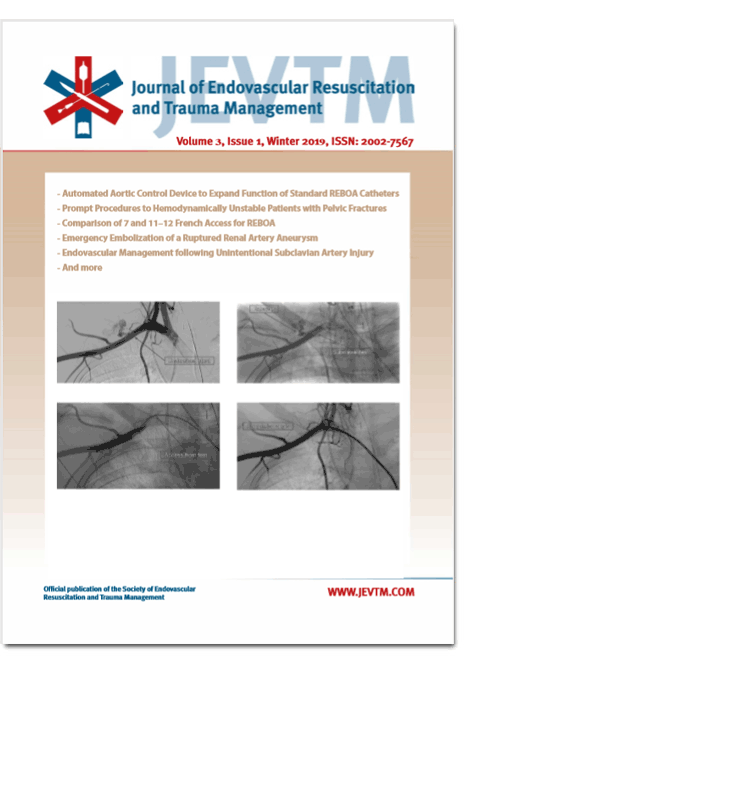Comparison of 7 and 11–12 French Access for REBOA: Results from the AAST Aortic Occlusion for Resuscitation in Trauma and Acute Care Surgery (AORTA) Registry
DOI:
https://doi.org/10.26676/jevtm.v3i1.79Keywords:
REBOA, Trauma, Aortic Occlusion, Injury, HemorrhageAbstract
Background: The introduction of low-profile devices designed for resuscitative endovascular balloon occlusion of the aorta (REBOA) after trauma has the potential to change practice, outcomes, and complication profiles.
Methods: The AAST Aortic Occlusion for Resuscitation in Trauma and Acute Care Surgery (AORTA) registry was used to identify REBOA patients from 16 centers. Presentation, intervention, and outcome variables were compared via traditional 11–12 French access platforms and trauma-specific devices requiring only 7 French access.
Results: From November 2013 to December 2017, 242 patients with complete data were identified, constituting 124 7 French and 118 11–12 French uses. Demographics of presentation were not diff erent between the two groups, except that patients using the 7 French had a higher mean Injury Severity Score (39.2 vs. 34.1, p = 0.028). The 7 French was associated with a lower cut-down requirement for access (22.6% vs. 37.3%, p = 0.049) and increased ultrasound guidance utilization (29.0% vs. 23.7%, p = 0.049). The 7 French afforded earlier aortic occlusion in the course of resuscitation (median 25.0 mins vs. 30 mins, p = 0.010) and a lower median requirement of packed red blood cells (10.0 vs. 15.5 units, p = 0.006) and fresh frozen plasma (7.5 vs. 14.0 units, p = 0.005). The 7 French patients were more likely to survive 24 h (58.1% vs. 42.4%, p = 0.015) and less likely to suff er in-hospital mortality (57.3% vs. 75.4%, p = 0.003). Finally, the 7 French device was associated with a four times lower rate of distal extremity embolism (20.0% vs. 5.6%, p = 0.014; OR 95% CI 4.25 [1.25–14.45]) compared to the 11–12 French.
Conclusions: The introduction of trauma-specific 7 French REBOA devices appears to have infl uenced REBOA practices, with earlier use in severely injured hypotensive patients via less invasive means that are associated with lower transfusion requirements, fewer thrombotic complications, and improved survival. Additional study is required to determine optimal REBOA use.
Published
How to Cite
Issue
Section
License
Copyright (c) 2019 Journal of Endovascular Resuscitation and Trauma Management

This work is licensed under a Creative Commons Attribution 4.0 International License.
Authors of content published in the JEVTM retain the copyright to their works.
Articles in the JEVTM are published under the terms of a Creative Commons CC BY 4.0 license, which permits use, downloading, distribution, linking to and reproduction in any medium, provided the original work is properly cited.




